Bobby Britnell is a highly experienced textile artist and teacher who has always loved sewing.
She became a member of Textile Study group in 1996 and is their current chair. She is also a member of the exhibiting group Through our Hands and is a Fellow of the RSA. She was a tutor on the BA (Hons) Embroidered Textiles Course for the Julia Caprara School of Textile Arts for several years.
In 2013 Bobby wrote her first book Stitched Textiles: Flowers .
She now works as a freelance textile artist and also runs courses from her home in South Shropshire. Her studio attracts the best teachers in the country with students coming from all over the world.
In this interview, Bobby Britnell tells us about choosing to work with a unique material called Bark cloth. She takes us through the process of how it is harvested and transformed ready for use and explains why it is so special and what it offers her as an artist.
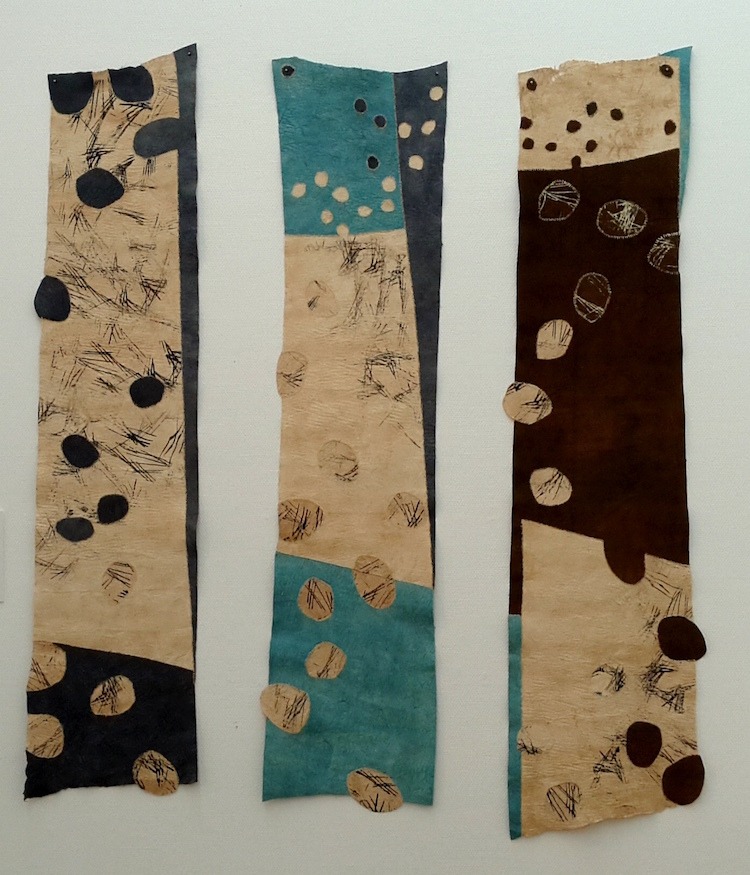
Theatrical beginnings
TextileArtist.org: What was your route to becoming an artist?
Bobby Britnell: I have always wanted to stitch. It was my favorite subject at school and one that I excelled in. It was natural to wish to pursue a working life stitching in some way or other. I worked Saturdays doing alterations in a high-class fashion house before leaving school at the age of 16.
My first job was in a theatrical costumiers in Soho London, where we made elaborate costumes for Talk of the Town, The Black and White Minstrel Show, many London pantomimes and some Television productions. It was very exciting work.
Later I trained as a tailoress for Sir Bernard Weatherill, Savile Row tailors, with a branch in Guildford. I later decided to go to College and studied Fashion and Needlework, and Art and Design, under Pamela Lee and Rozanne Hawksley.
I taught for 12 years in a large comprehensive school, with a sixth form eventually becoming teacher in charge of textiles throughout the school. During this time I completed my City and Guilds in Embroidery Parts 1 and 11, both with distinction and did this at evening class with Liz Ashurst.
In 1986 my husband and I moved to Shropshire and opportunities for teaching and exhibitions were sought. I was invited to teach at Westhope College where I stayed for a further 12 years and taught on a number of City and Guilds Courses up to Diploma level.
In 1996 I joined the Textile Study Group (formerly the Practical Study Group) and this brought with it very exciting and challenging exhibition opportunities. I also exhibit with Through our Hands.
Do you use a sketchbook? If not, what preparatory work do you do?
I do use sketchbooks and find them invaluable. It is a means of sorting out thought processes, investigating technique and testing ideas.
I do not mind if pages are messy or unfinished……….I am not precious in that way, but the books themselves are precious. A few have gone astray over the years and I still miss them and often wish to refer to them.

What environment do you like to work in?
I have a wonderful studio and spend most of my time in there!!! It is a very easy space to work in. I also love my natural outdoor surrounds but tend to use this more for drawing studies and paintings rather than for textile work.
The attraction of bark cloth
What currently inspires you?
My current inspiration comes from my explorations with bark cloth from Southern Uganda. Bark cloth is possibly one of the world’s oldest non-woven fabrics which come from the Mutuba Tree (Ficus Natalensis) from the Buganda Kingdom in Southern Uganda. Baganda craftsmen have been manufacturing bark cloth for the people of Uganda and the royal family for centuries and it is still worn for ritual and healing ceremonies, for cultural events and funerals. Traditionally it would have been worn as a toga by both men and women, with the women also wearing a sash.
Bark cloth is 100% organic fibre and can be described as an organic living cloth which, in the history of textile is unquestionably a most ancient cloth and the first non-woven textile. Being biodegradable and manufactured with no added chemicals or textile agents, gives it added attraction.
Bark cloth was discovered in the early 13th century sometime between 1217 to 1247. It is steeped in mysterious cultural heritage and in understanding the relevance and importance of bark cloth, one needs to understand the cultural history in Uganda as well.
It requires a master craftsman with the knowledge and experience required to carry out this ancient technique which incidentally also predates weaving. I was privileged to be shown this process on a trip out to Uganda in 2013.
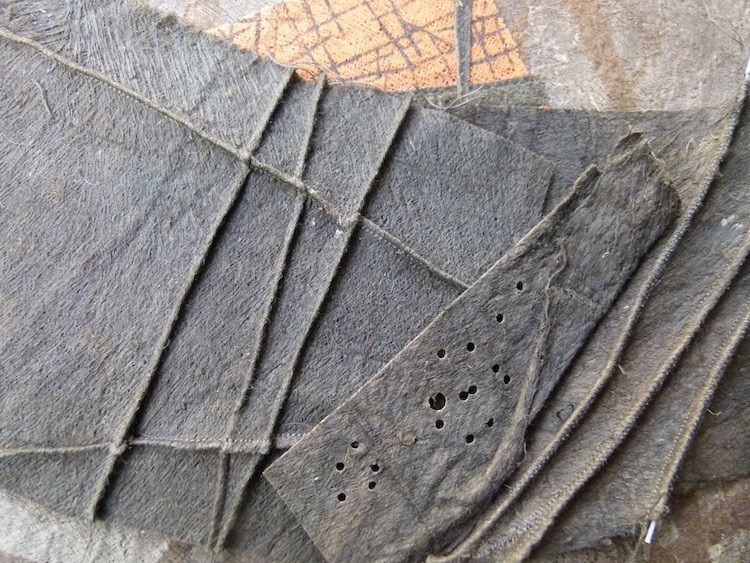
Harvesting
The inner bark of the Mutuba Tree is harvested during the wet season and when the leaves begin to turn a yellowish colour. The outer bark is carefully scraped off with a machete. A cut is then made around the top and bottom of the tree and then a slice is carefully down the full length of the tree. The bark is peeled off in one full piece from the base upwards, with the aid of a stalk from a banana leaf.
The next important stage is to immediately protect the tree, by wrapping it with freshly picked banana leaves, bound with raffia grass. The trunk can sometimes be treated by smearing the exposed trunk with cow dung before wrapping it. It is left like this for several days and then unwrapped, leaving it to regenerate.
The removed bark is rolled and soaked in hot water for about 30 minutes to soften it. Then it is ready for pounding with grooved wooden mallets, a laborious process which is best carried out in an open wooden shed to prevent the bark cloth from drying out too quickly.
The master craftsman is required to exercise the best beating rhythm to beat a cloth as this is essential for the production of high-quality bark cloth. This pounding technique gradually increases the size of the cloth from an original width of approximately 12 inches to between two to three meters.
The bark cloth is then sun dried and will turn to a gorgeous brown colour, although the shades of brown can vary depending on several factors, such as the type of tree, time, rain, the area where the trees grow, length of time in the sun etc.
The trunk of the tree is also of great use in making mortars (ekinu), beer brewing vessels (elwato), furniture and for firewood and charcoal, while the leaves are useful for animal feed and soil enrichment.
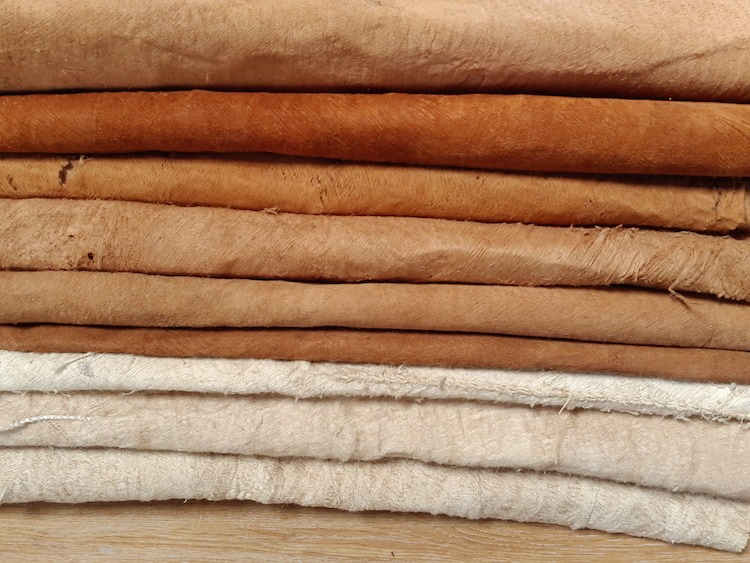
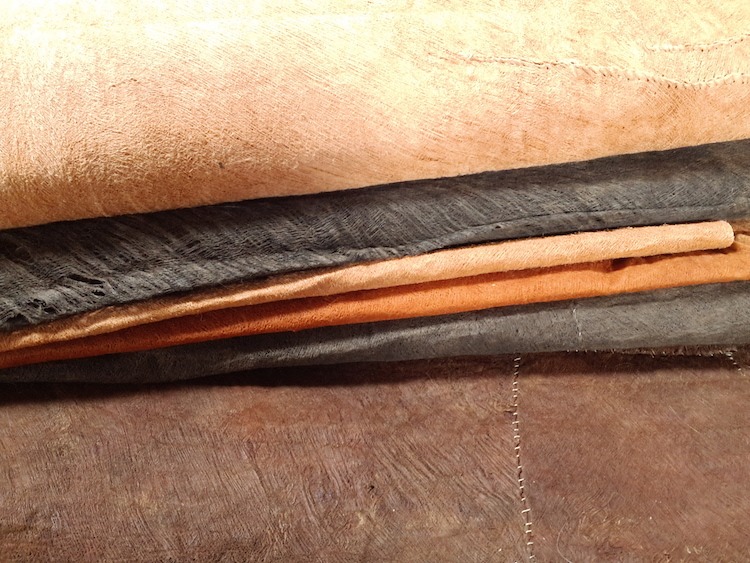
A unique cloth
Each piece of bark cloth is unique in colour and texture and extremely labour intensive.
One particular characteristic is the small holes and openings which come about from the pounding process. These are hand stitched or patched together using a handmade sisal thread.
I love this special quality of the barkcloth as it gives each piece a uniqueness. I also love the knowledge that yet another skilled persons hand has been at work.
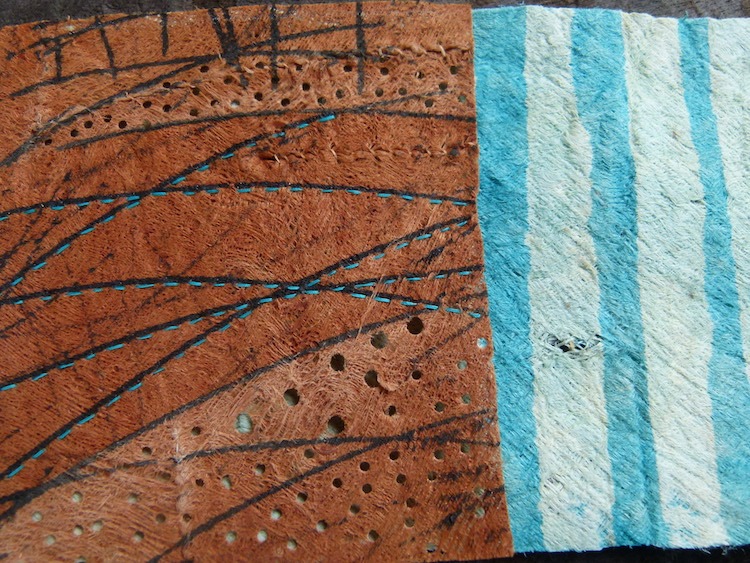
A sound working ethos
Who have been your major influences and why?
Cecily Sash, South African contemporary artist has been a major influence on my work over the past years. Her routes in painting come from the Bauhaus teachings and her work is certainly strong in composition and design and she has taught me how to use the picture plane in my own work.
I also am greatly inspired by the German Expressionist and currently with the works of landscape artist David Tress. I tend to look at the works of fine artists for inspiration and understanding rather than textile artists.
What advice would you give to an aspiring textile artist?
Anyone aspiring to be a textile artist needs to have a passion and drive and most importantly to believe in themselves as an artist. It is hard, continuous work and for me, it almost needs to be an extension of one’s life.
I find it hard to work a 9.00 to 5.00 day as inspiration comes at all kinds of time and of course there are the deadlines. But if one can develop a sound working ethos, everything does get done in the end, with still time to do other creative pursuits.
Can you recommend 3 or 4 books for textile artists?
I have a relatively large library of books and use them regularly when teaching or to look for inspiration for myself. It is hard to select a few as every book can be recommended in some way or other. What is important is to know what you are looking for when researching information from books…….look with purpose.
Also, as textile artists, you should be looking at other art forms, as well as books from great past and contemporary art masters. I do love the townscape and landscape work of Egon Schiele, and the highly expressive landscapes of David Tress. Both artists are very different yet one can draw inspiration from both their works.
I also use Cecily Sash’s recent book for ideas on composition, which is obtainable from my studio.
What other resources do you use? Blogs, websites, magazines etc.
I find the internet a very useful tool, but will use it more as a resource for teaching purposes and some research work. I do use Facebook and Pinterest and more recently am playing with Instagram.
I am supportive of the Embroiderers Guild and enjoy Embroidery magazine and also buy Crafts to give me a broader perspective of what is happening in Craft, Art and Design.
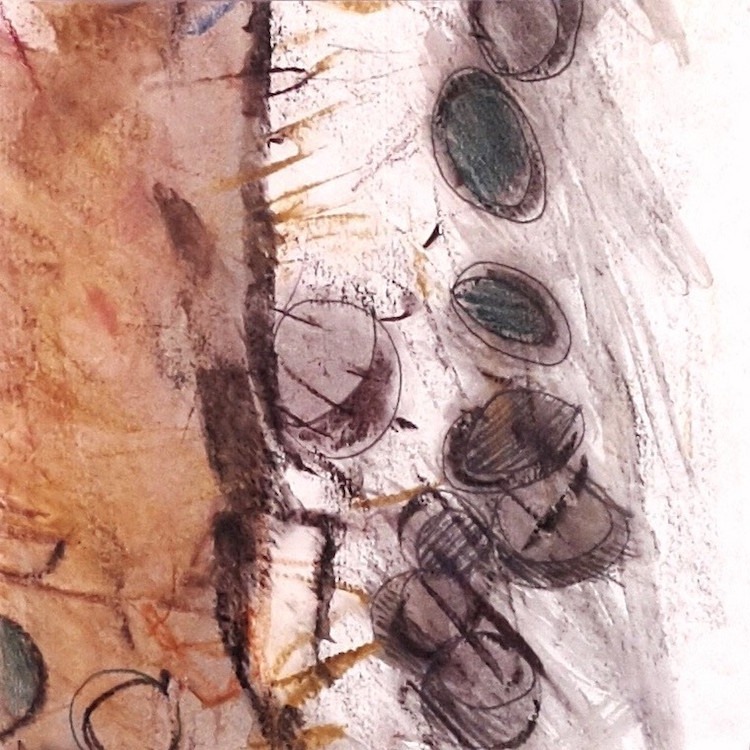
My love for versatile charcoal
What piece of equipment or tool could you not live without?
This has to be a roller, as I love basic monoprint and the surfaces that this can create. I also feel that the roller itself has masses of potential. You can draw lines with it, make marks, draw on the inked up roller and so much more.
However, a media that I cannot do without is charcoal. I just love the immediacy of this media and its versatility. It can make delicate marks as well as strong bold marks, it can be smudged or used very cleanly, it can be rubbed out and reworked. It can be used with water or on top of other surfaces, such as gesso………I just LOVE IT.
Do you give talks or run workshops or classes? If so where can readers find information about these?
I run courses from my purpose built studio in South Shropshire. I also bring in the countries best tutors who offer two, three or four day courses.
In addition, I am out and about doing workshops, so do check my website to see if I am in your part of the country or in fact your part of the world as I do travel abroad to teach. My new programme for 2017 is now featured on my new website.
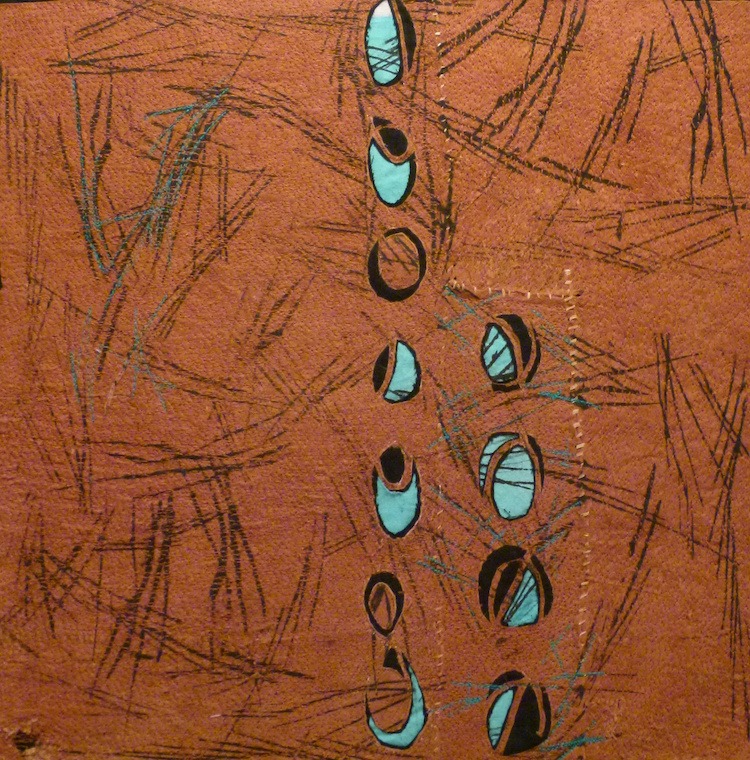
Where can readers see your work this year?
In 2017 my work can be seen in several venues;
Select Festival, Stroud, Gloucestershire – 2nd May to 21st May 2017. Featuring ‘DIS/rupt ‘ from The Textiles Study Group, curated by Dr. Melanie Miller
Museum in the Park – 1 – 21 May
Lansdown Hall Gallery – 3 – 21 May
Official opening for both venues – Friday 5 May
A lively programme of half day, full day and two day workshops and gallery events will provide opportunities for participation, learning and discussion during the Select Festival.
An introduction to the project is available here.
Regular updates on how members of the group are developing their work for the project are featured on the Textile Study Group blog.
Details and booking information for workshops are available here.
For further enquiries please contact: Alice Fox on behalf of the Textile Study Group: (alice@alicefox.co.uk 07967 649933) Select Festival enquiries: gro.tcelestis@ofni 01453 751056 (www.sitselect.org)
Other events include;
Minerva Quilt Association, Llanidloes – 5th August to 16th Sept 2017
Festival of Quilts with Through our Hands, Birmingham – 10th to 13th August 2017
Knitting and Stitching Shows, London -11th to 15th October 2017, Dublin – 9th to 12th November 2017 and Harrogate – 23rd to 26th November 2017
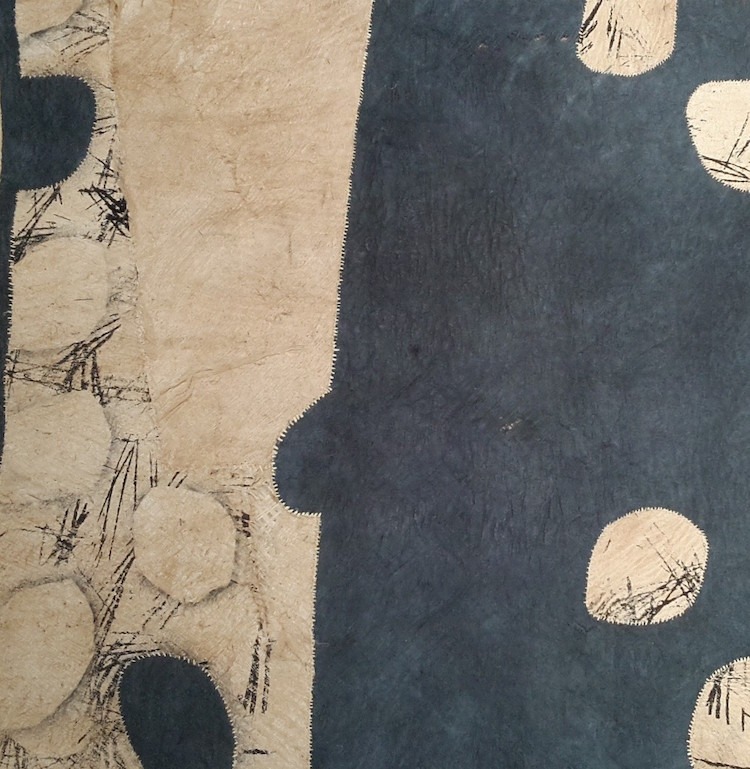
For more information visit: www.bobbybritnell.co.uk or e-mail bobby@bobbybritnell.co.uk
If you’ve enjoyed this interview why not share it with your friends on Facebook using the button below?
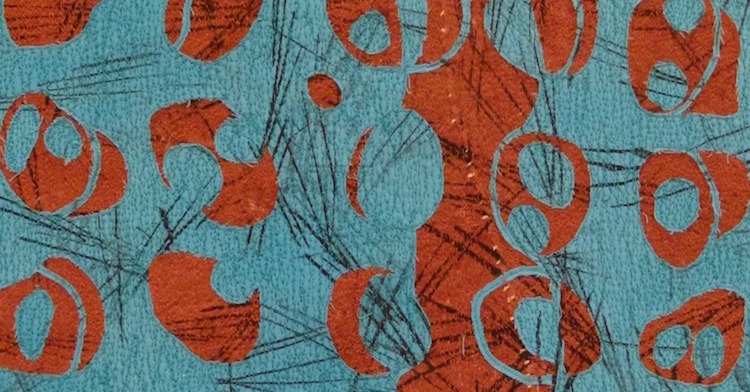

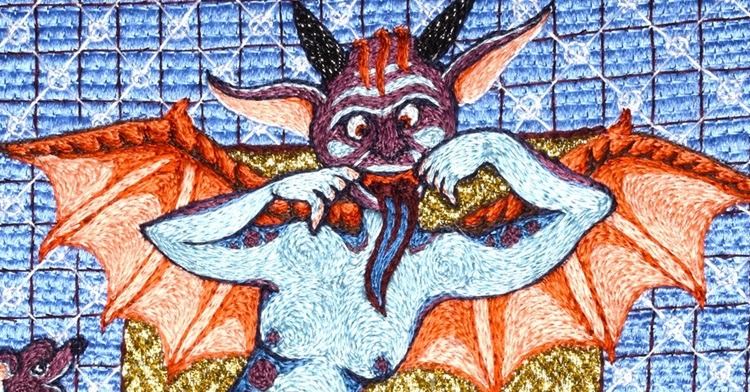
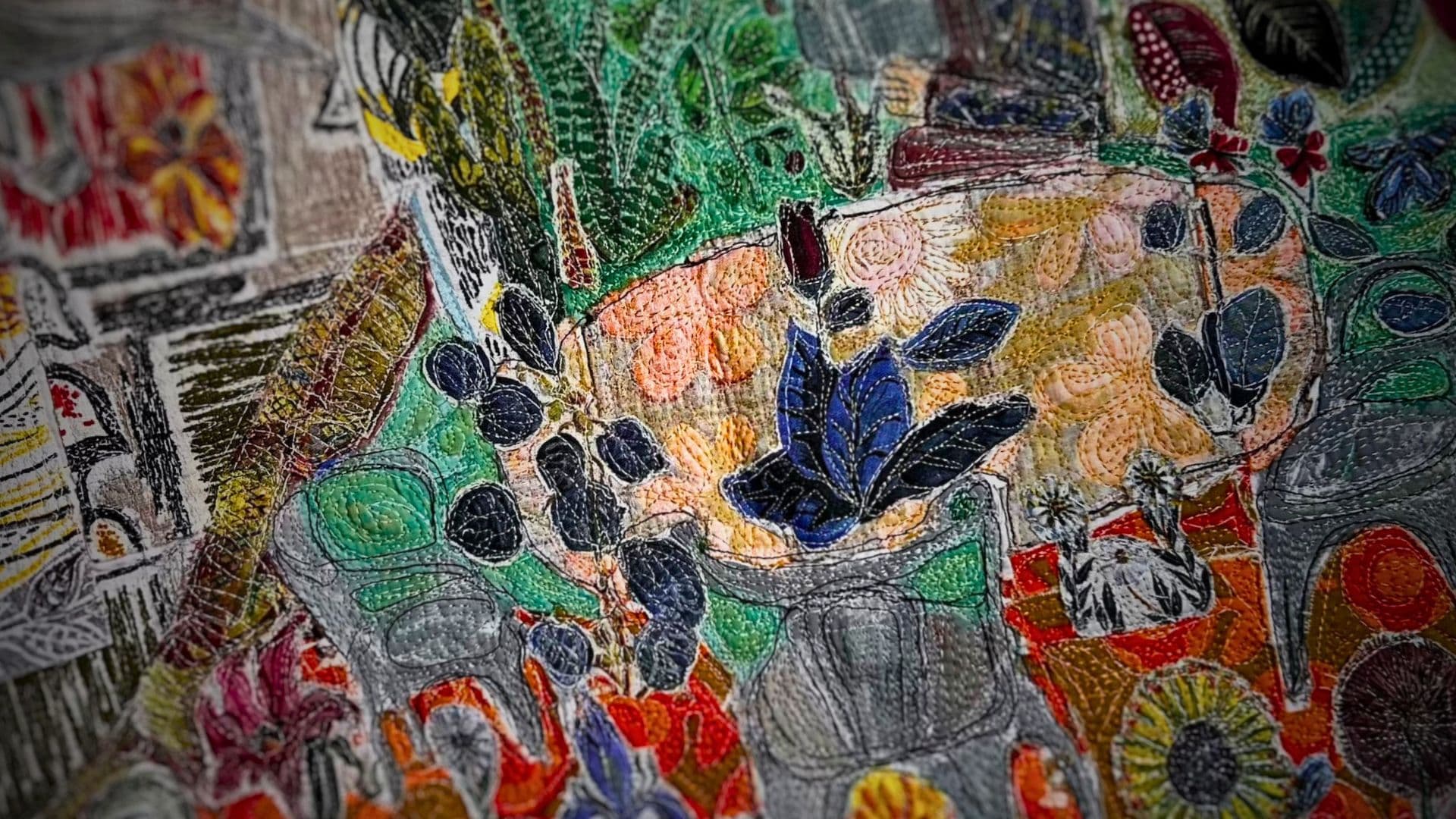
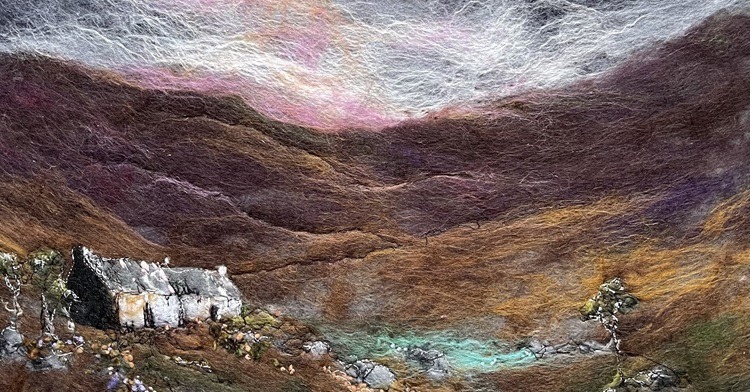
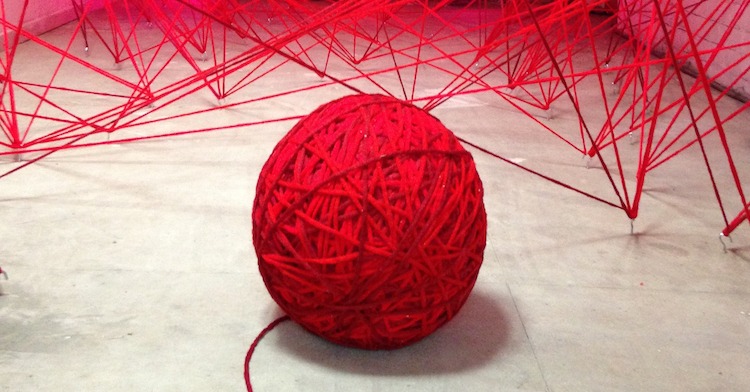
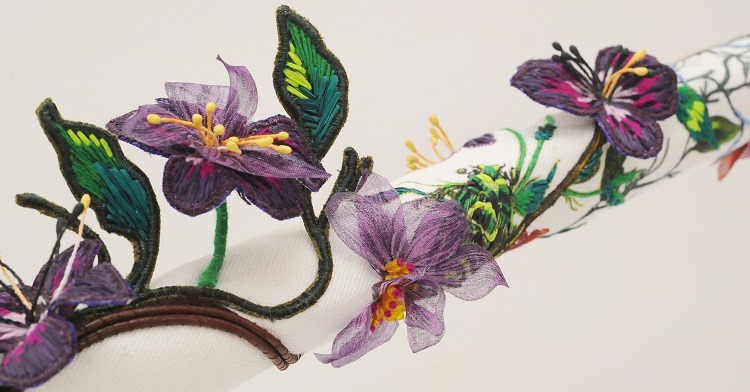
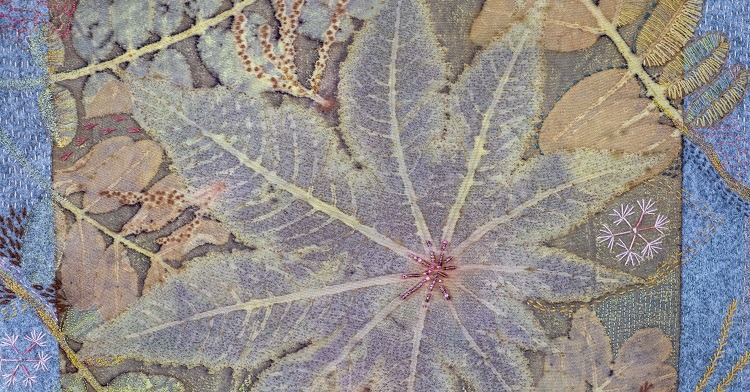
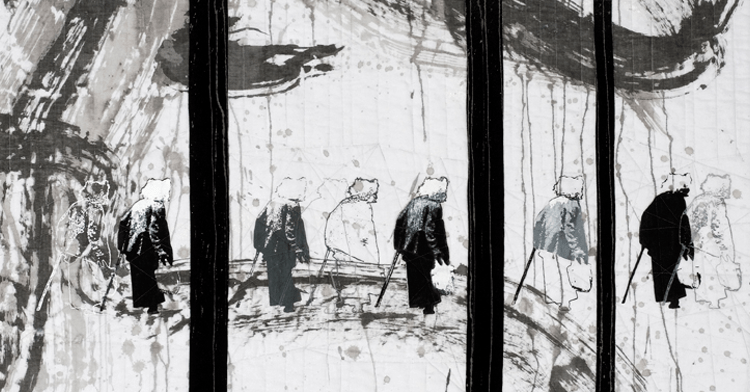
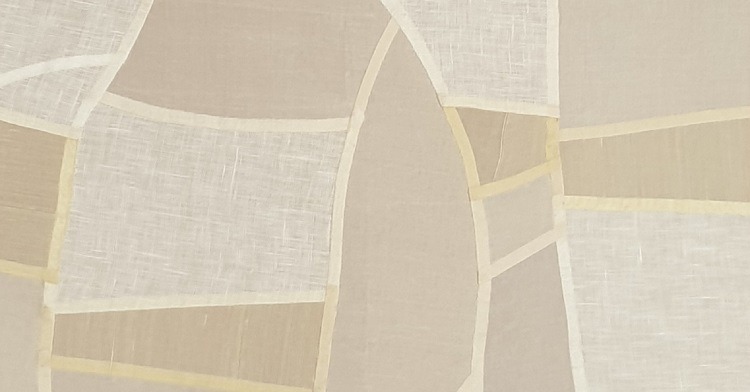
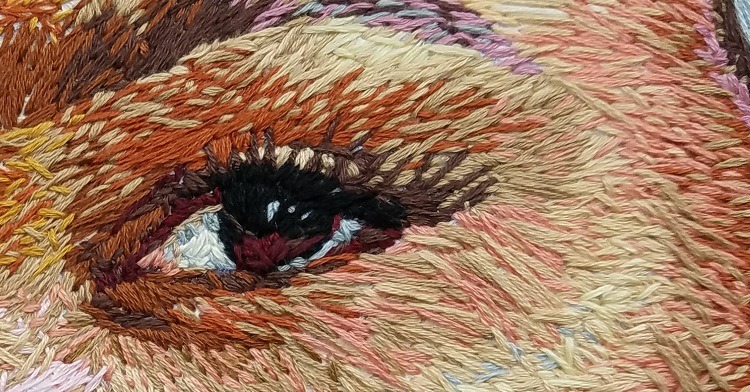
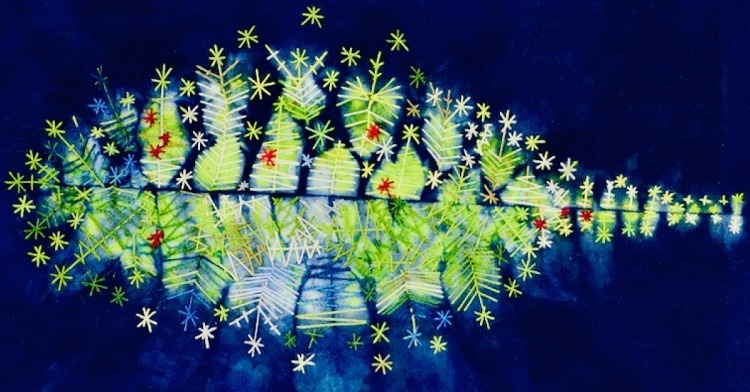
Comments